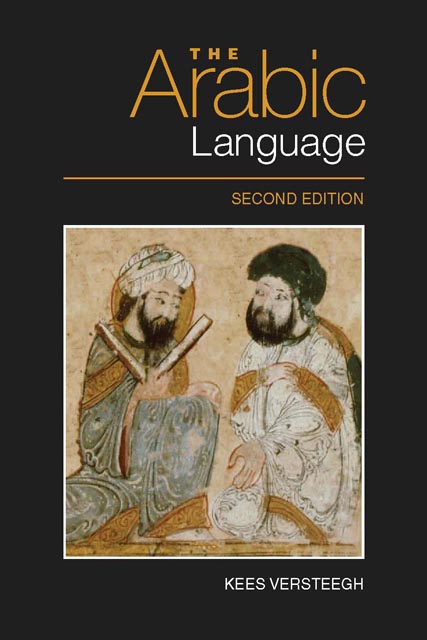Book contents
- Frontmatter
- Contents
- Preface to First Edition
- Preface to Second Edition
- List of Figures and Maps
- List of Tables
- Note on Transcription and Glossing
- 1 The Study of Arabic in the West
- 2 Arabic as a Semitic Language
- 3 The Earliest Stages of Arabic
- 4 Arabic in the Pre-Islamic Period
- 5 The Development of Classical Arabic
- 6 The Structure of Arabic
- 7 The Arabic Linguistic Tradition
- 8 The Emergence of New Arabic
- 9 Middle Arabic
- 10 The Study of the Arabic Dialects
- 11 The Dialects of Arabic
- 12 The Emergence of Modern Standard Arabic
- 13 Diglossia
- 14 Bilingualism
- 15 Arabic as a Minority Language
- 16 Arabic Pidgins and Creoles
- 17 Arabic as a World Language
- Bibliography
- List of Abbreviations
- Index
5 - The Development of Classical Arabic
Published online by Cambridge University Press: 18 November 2022
- Frontmatter
- Contents
- Preface to First Edition
- Preface to Second Edition
- List of Figures and Maps
- List of Tables
- Note on Transcription and Glossing
- 1 The Study of Arabic in the West
- 2 Arabic as a Semitic Language
- 3 The Earliest Stages of Arabic
- 4 Arabic in the Pre-Islamic Period
- 5 The Development of Classical Arabic
- 6 The Structure of Arabic
- 7 The Arabic Linguistic Tradition
- 8 The Emergence of New Arabic
- 9 Middle Arabic
- 10 The Study of the Arabic Dialects
- 11 The Dialects of Arabic
- 12 The Emergence of Modern Standard Arabic
- 13 Diglossia
- 14 Bilingualism
- 15 Arabic as a Minority Language
- 16 Arabic Pidgins and Creoles
- 17 Arabic as a World Language
- Bibliography
- List of Abbreviations
- Index
Summary
Introduction
At the beginning of the Islamic period, only twosources of literary Arabic were available, theQurʾān and thepre-Islamic poems. It is not surprising, then, thatthese two sources were to play a crucial role in thestandardisation and development of the Arabiclanguage. It is not surprising, either, that thefirst scholarly activities in Islam concentrated onthe text of the Qurʾān, which had to be transmitted andexplained, both on the level of the text and on thatof the contents. At the same time, when the directties with the desert were broken, the livingpractice of poetry was very soon replaced byscholarly interest in the pre-Islamic poems. Thetransmission of both ‘texts’ had taken place orallyand informally, but in the rapidly expanding empiresuch a form of transmission could no longer betrusted.
The language itself, too, underwent a process ofstandardisation. While in pre-Islamic times theBedouin regarded themselves as members of one speechcommunity, they had no single linguistic norm, andeven in the language of poetry, which was supposedto be supra-tribal, a great deal of variation wasaccepted. After the conquests, when Arabic becamethe language of an empire, there was an urgent needto standardise the language for three reasons.First, the divergence between the language of theBedouin and the various colloquial varieties thatemerged became a real threat to communication in theempire. Second, the policy of the centralgovernment, first in Damascus and later in Baghdad,was aimed at controlling its subjects not only ineconomic and religious but also in linguisticmatters. Obviously, if Arabic was to be used as thelanguage of the central administration, it had to bestandardised. Third, the changed situation calledforth a rapid expansion of the lexicon, which had tobe regulated in order to achieve some measure ofuniformity.
This chapter deals with three topics connected with theprocess of standardisation. The most importantprerequisite for the written codification of thelanguage was the invention of an orthography, orrather the adaptation of existing scribal practicesto the new situation.
- Type
- Chapter
- Information
- The Arabic Language , pp. 60 - 84Publisher: Edinburgh University PressPrint publication year: 2014

